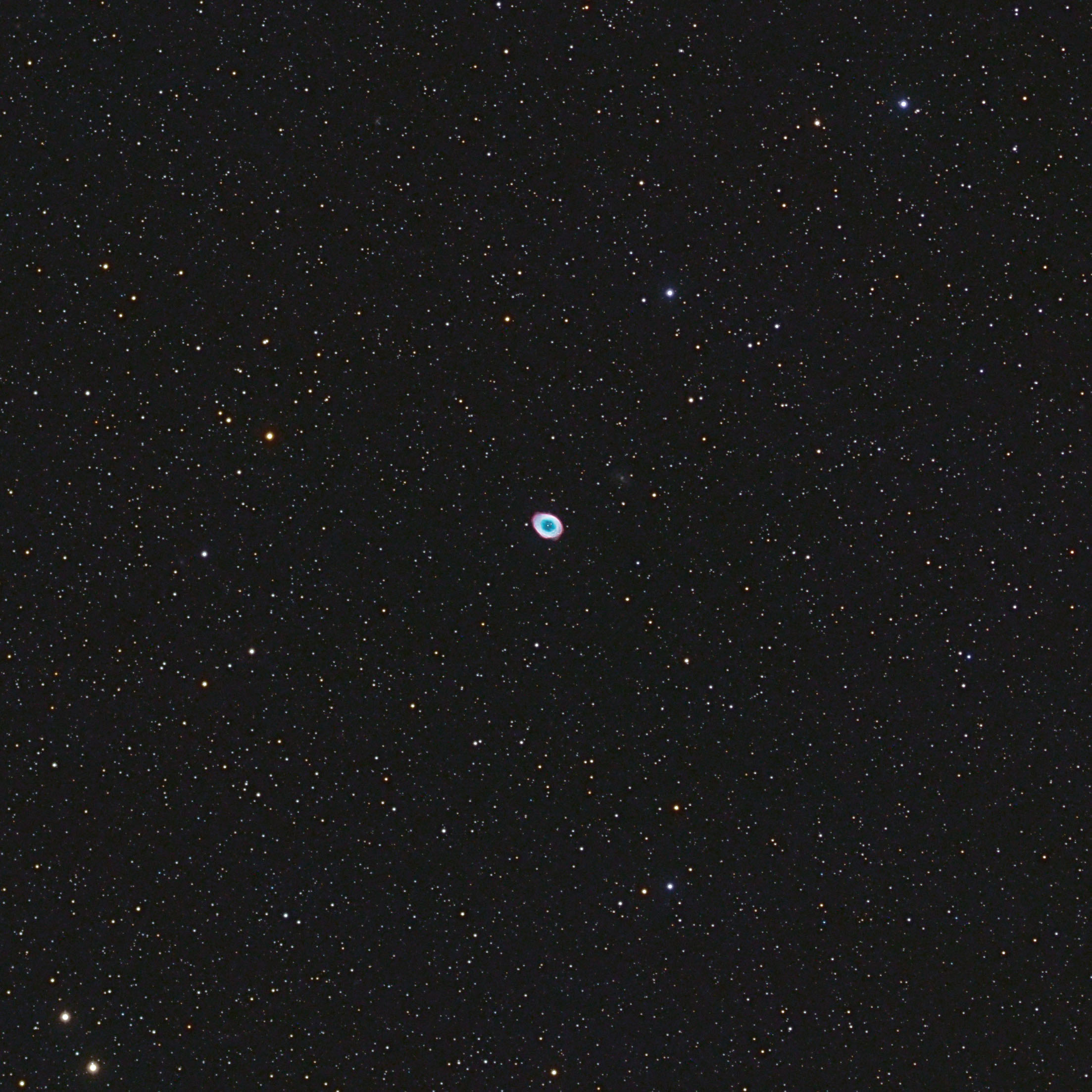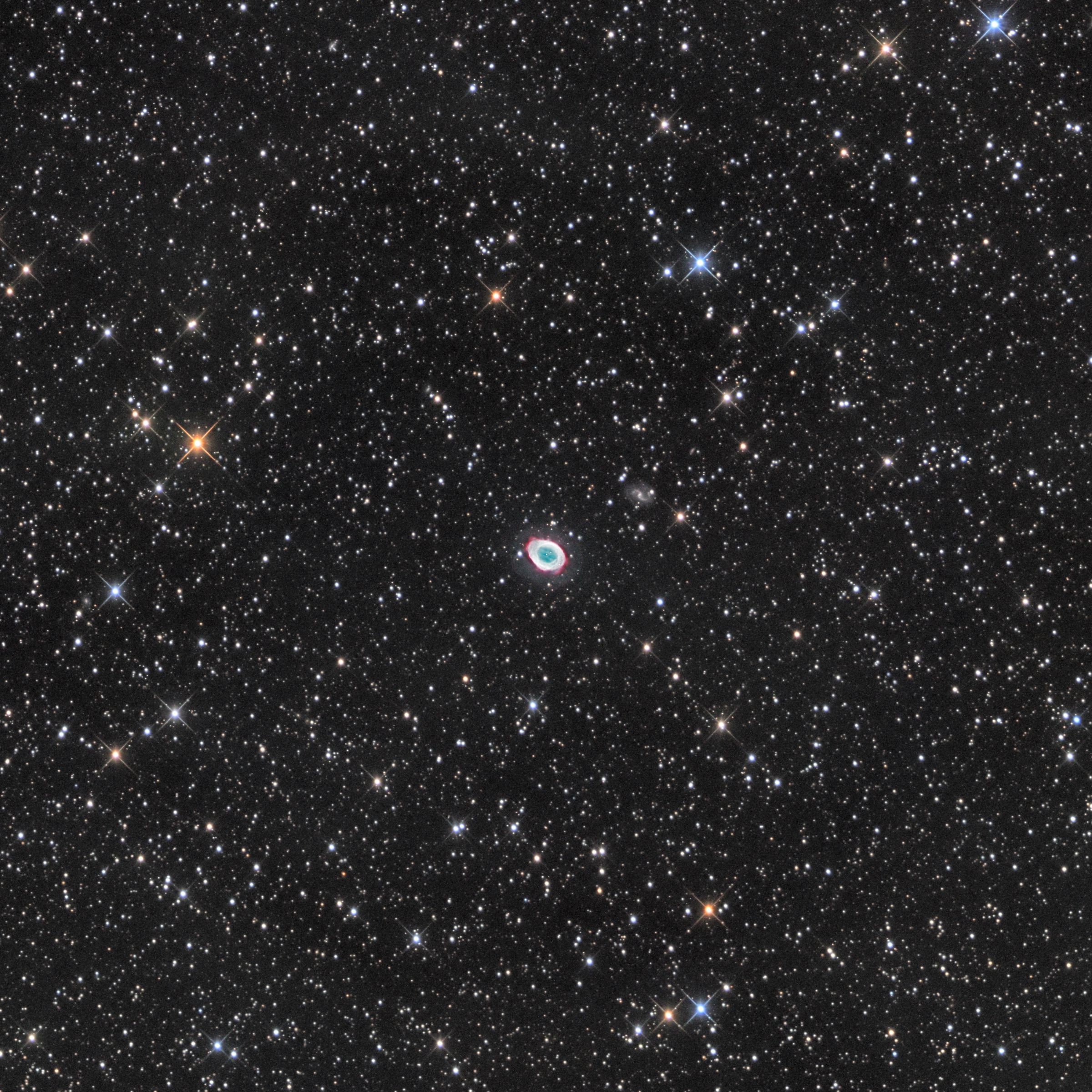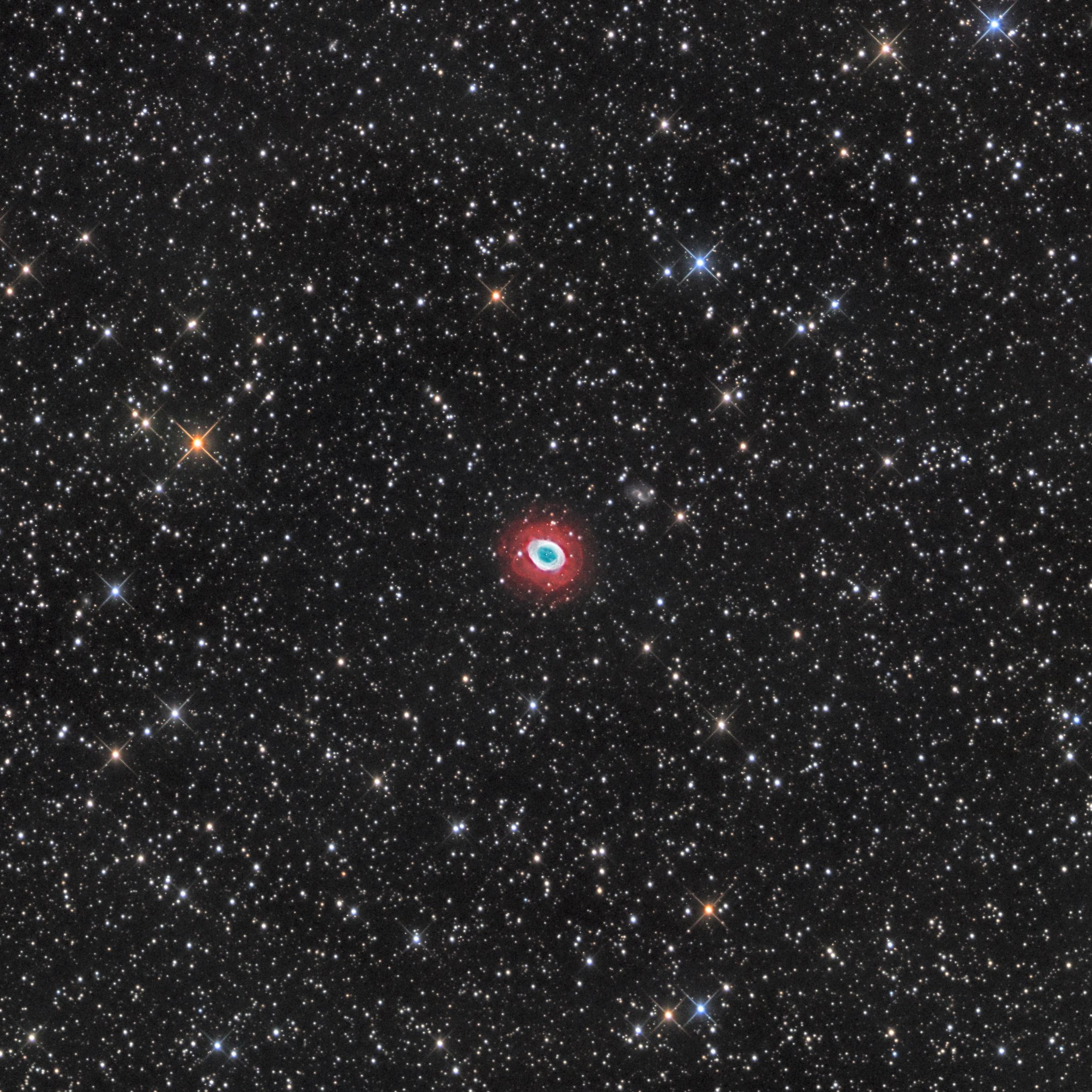M 57 Introduction

The Ring Nebula or M 57 in Lyra is a bright and famous object. It presents interesting views in various telescope sizes visually. It is visible even with small telescopes or under urban skies.
Photographically it is more difficult as one may think, because the bright parts as visible in the figure show a large dynamic range. Whereas the dimmer parts – not observed visual as far as I know – call for long exposure times and narrow band imaging. The photo was taken as test shot for a camera in summer 2018.
M 57 with the 10″ Newton

Setting up my Newton in spring 2020 it was a must to repeat the test shot with the new telescope. Hence I collected 52 x 2 min luminance and 20 x 2min of each RGB resulting in 2 h 44 min exposure time at f/2.8. The result with – at this time – optimized processing is shown in the next figure. Of course, this is deeper shot. Normalized to f/5.5 the exposure times compare as 1.4 h for the first shot and 10.6 h for new shot!
A closer look at the deeper picture reveals a halo around the well-known ring structure of M 57. This halo is not a secret, but it is considerably more seldom photographed than the famous ring. In any case this was my ignition to hunt the halo.
H-alpha Components
Consequently I collected about 3 h H-alpha light (7.5nm FWHM) which should cover H-alpha and N[III] emissions under normal circumstances. But with my f/2.8 system the center wavelength of the interference filter shifts. This leads to a significant transmission loss, hence the signal in my H-alpha frames was very poor and not satisfying at all.

I knew that at f/4.0 my narrowband filter would work properly. So I spent a few hours in my workshop and tinkered an adaption for my ES-HRCC. This gimmick actually is a part of my Dobson for visual use. I read that it should give good photographic results as well. Because f/4.0 means 1000 mm focal length for my newton, the pixel scale would decrease to 0.75 arc sec / Pixel with the Atik 490. For that reason I decided to adapt my KAF-8300 based Atik 383. Even though it has a lower quantum efficiency, it would result in a scale of 1.1 arc sec / Pixel. This fits very well to the scale of the 490 with f/2.8 (1.01 arc sec / pix), it is the less noisy and it is still a feasible scale under my skies.
Discussion
The figure above shows the resulting photo with integrated H-alpha lights. Not merely the halo reveals but also a second dimmer one. The diameter of this outer halo estimates to approx. 4 arc min. This is quite huge compared to the of often listed diameter of 1 arc min. At this stage the reader should be aware that the relative intensities of the colors don’t have a relation to the reality anymore. The reason is mainly the addition of H-alpha but as well the pronounced nonlinear processing.
The mouseover shows the Newton photo from September and November (H-alpha) in its main processing stages. LRGB basic stand for a plain and simple processing without any tricks beyond noise reduction. LRGB optimized stands for a more sophisticated processing including deconvolution, sharpening, HDR techniques with elaborate use of masks. LHRGB optimized means that additional to the techniques of the previous picture the H-alpha exposures have been included. Calar Alto shows a photograph of Calar Alto Observatory. The data were processed by Vicent Peris, Jack Harvey, Steve Mazlin and José Luis Lamadrid with the program PixInsight. Spitzer shows a photo of NASA’s Spitzer Space Telescope taken in infrared.